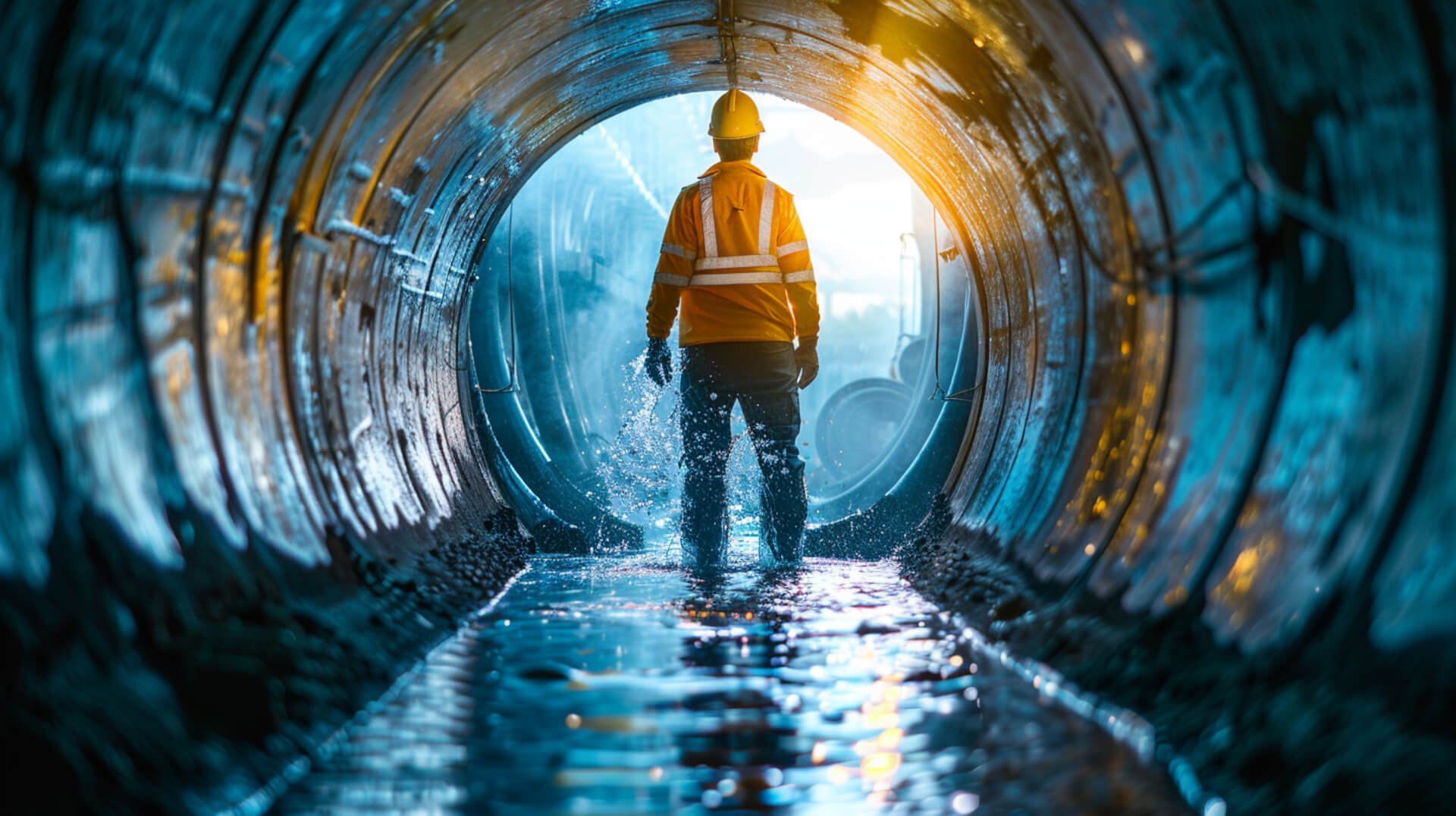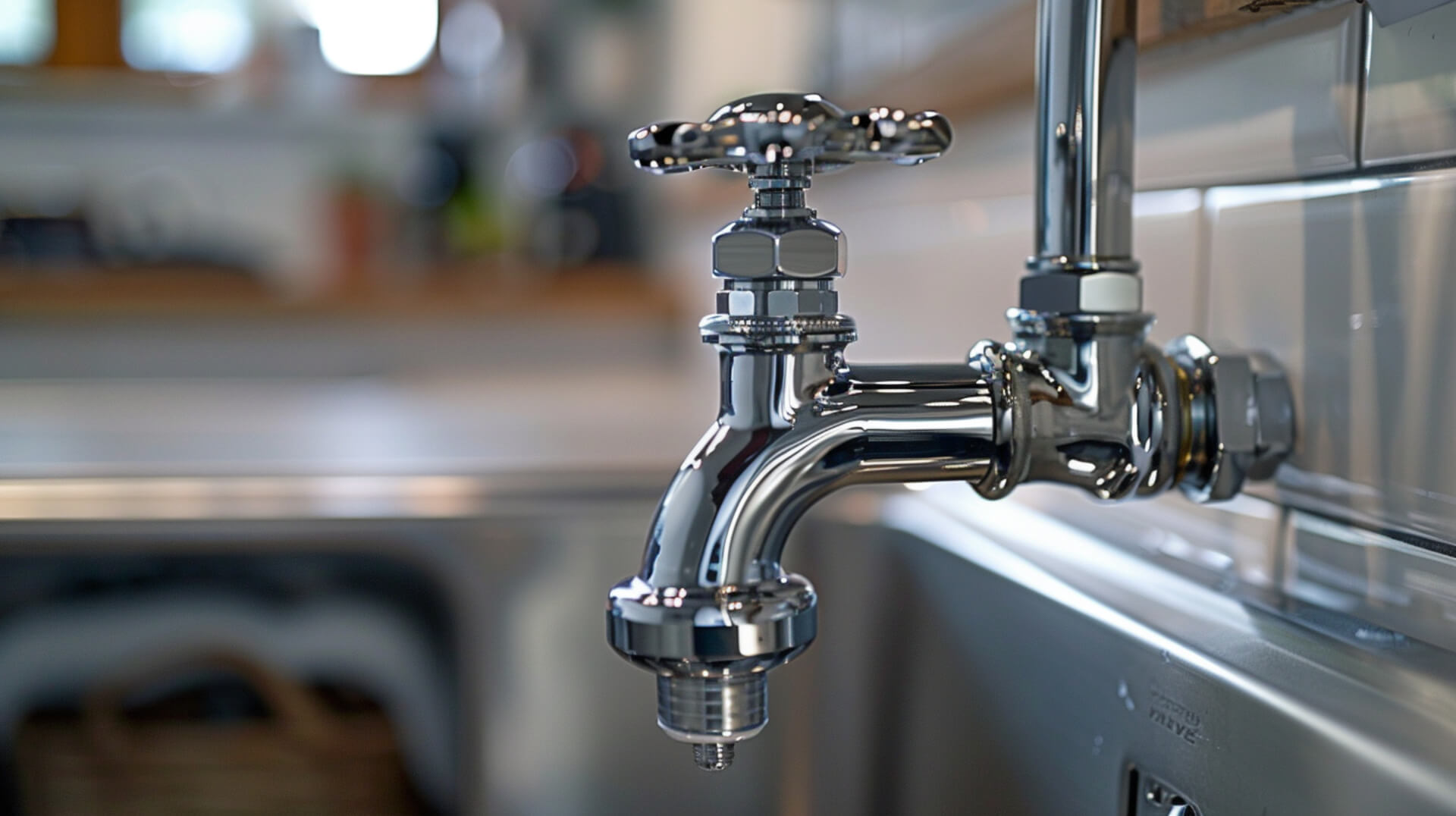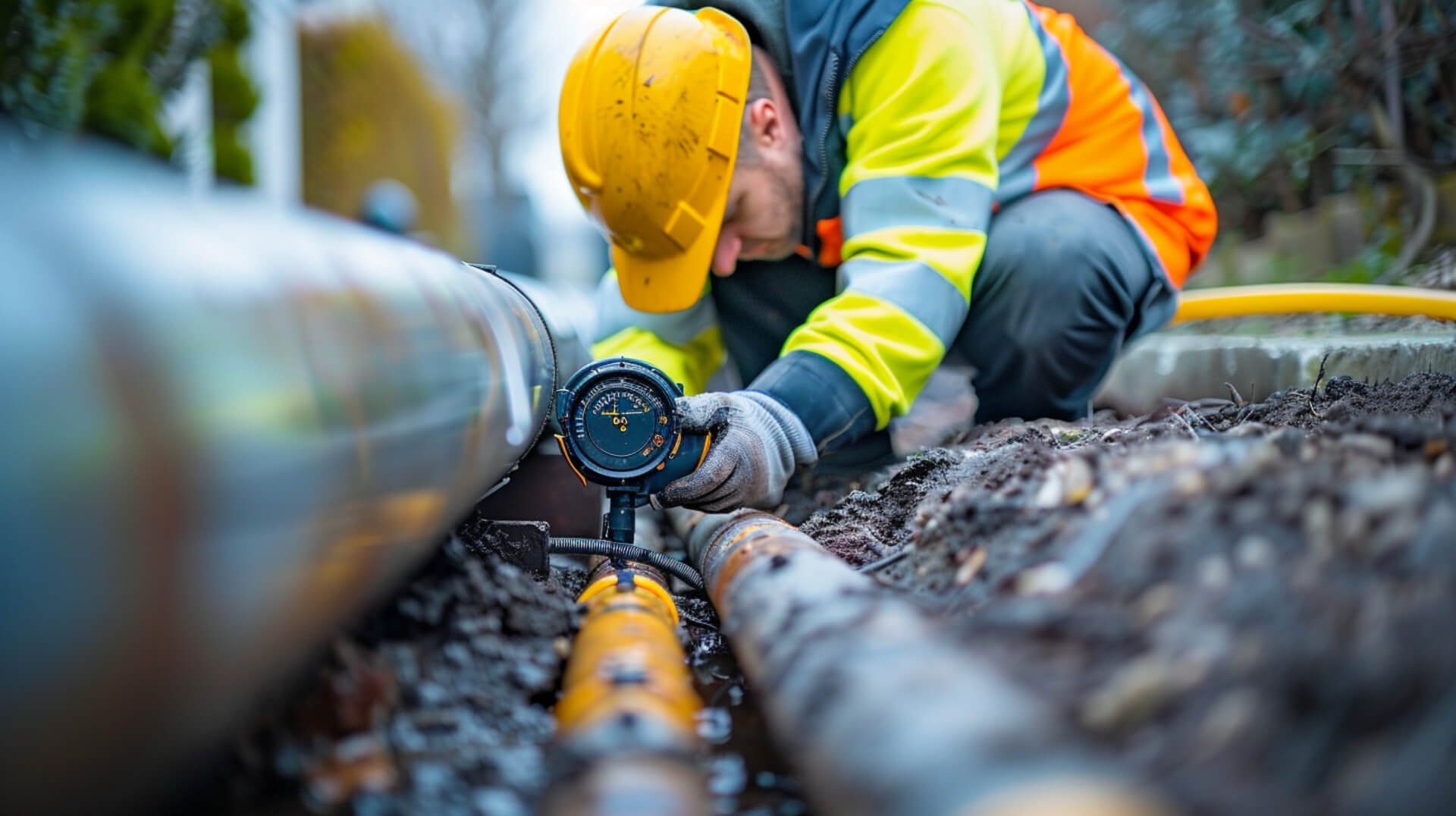 How Long Does It Take To Remove A Fatberg
How Long Does It Take To Remove A Fatberg

Understanding the makeup and origin of fatbergs is essential for grasping the complexities of their removal. Fatbergs are congealed masses that accumulate in sewer systems, primarily composed of non-biodegradable solids and fats, oils, and grease (FOG). These elements combine with other substances such as calcium, free fatty acids, water, microbial activity, surfactants, and phosphates to form a solid mass resembling concrete.
Primary Components of a Fatberg
The primary constituents of a fatberg include:
- Non-flushable items: Wet wipes, sanitary products, and cotton buds
- FOG: Fats, oils, and grease from domestic and commercial sources
- Calcium and free fatty acids: Contributing to the hardening of the mass
- Microbial activity: Bacteria and other microorganisms that can thrive in the sewer environment
Formation Dynamics in Sewer Systems
Fatbergs form through the interaction of flushed non-flushables and FOG on the rough and turbulent surfaces of sewer pipes. Over time, these materials accumulate and solidify, creating blockages that can grow to monumental sizes.
Relevance of Composition to Removal
The composition of a fatberg directly affects the strategies employed for its removal. For instance, a fatberg heavy in FOG may require different techniques compared to one predominantly composed of solid waste.
Impact of Formation on Removal Strategies
The process of fatberg formationwhere materials bind and hardenpresents unique challenges for removal. Understanding this process is crucial for developing effective removal techniques that minimise the time and resources required to clear these blockages from sewer systems.
Factors Influencing Fatberg Removal Time

Understanding the variables that affect the duration of fatberg removal is essential for property owners, business owners, and facility managers. The time required to clear these sewer blockages can vary significantly based on several factors.
Size and Composition of the Fatberg
The size of a fatberg directly correlates with the time needed for removal. Larger fatbergs, sometimes weighing upwards of 130 tonnes, necessitate extended efforts. The composition also plays a pivotal role; fatbergs rich in fats, oils, and grease (FOG) may require different techniques compared to those dominated by non-biodegradable solids.
Location Within the Sewer System
Accessibility challenges within the sewer system can impact the removal process. Fatbergs located in hard-to-reach areas or in ageing infrastructure may prolong the operation due to the additional precautions and manoeuvres required.
Impact of Removal Techniques
The choice of removal technique, whether it be high-pressure water jets, manual excavation, or the use of specialist equipment, influences the timeline. Innovative methods, such as ultrasonic treatment, may expedite the process, while traditional methods might extend the duration.
By considering these factors, you can better anticipate the time frame for fatberg removal and plan accordingly to minimise disruption and potential damage.
Techniques and Equipment for Fatberg Removal

The removal of fatbergs from sewer systems is a complex process that requires specialised techniques and equipment. Understanding the tools and methods used can help stakeholders prepare for the operational aspects of fatberg extraction.
Common Removal Techniques
The primary methods for fatberg removal include the use of high-pressure water jets to break down the mass, manual excavation for smaller or more accessible blockages, and the deployment of specialist equipment for larger or more challenging obstructions.
Essential Equipment for Removal
Efficient fatberg removal often necessitates the use of high-pressure hoses, which can dislodge and fragment the congealed mass. In addition, manual tools such as shovels and pickaxes may be employed when direct access to the fatberg is possible.
Innovative vs. Traditional Methods
Innovative removal methods, such as ultrasonic treatment, aim to reduce the time and labour involved in traditional removal processes. These advanced techniques can offer a more rapid response to fatberg incidents, potentially minimising the impact on sewer system operations and the associated downtime.
The selection of a removal technique is critical to the efficiency of the operation. It influences not only the duration of the removal but also the safety of the workers and the integrity of the sewer infrastructure.
Challenges in Fatberg Removal

The removal of fatbergs presents a set of challenges that can complicate the process, extend the duration, and impact the effectiveness of the efforts undertaken.
Environmental and Infrastructural Concerns
One of the primary challenges is the environmental impact. The removal process can lead to the release of methane, a potent greenhouse gas, and other pollutants into the ecosystem. Additionally, the infrastructure itself may suffer damage during removal, especially in older sewer systems, which can lead to further complications and extended repair times.
Regulatory Compliance
Another significant challenge is adhering to the regulatory landscape. Agencies set forth standards and regulations that must be followed during the removal process. Compliance ensures safety and environmental protection but can also add layers of complexity and potential delays to the operation.
Summary of Removal Challenges
- Environmental Impact: Potential release of greenhouse gases and pollutants.
- Infrastructure Damage: Risk of damage to the sewer system, especially in older networks.
- Regulatory Standards: Necessity to comply with agency regulations, which can introduce additional steps and requirements.
These challenges underscore the importance of a well-planned and executed removal strategy that considers the environmental, infrastructural, and regulatory dimensions of fatberg removal.
Duration of Removal: Case Studies and Real-Life Examples

When considering the time it takes to remove a fatberg, historical case studies provide valuable insights. These real-life examples serve as benchmarks for current removal efforts and help set realistic expectations for those facing similar challenges.
Notable Fatberg Removals
Past incidents of fatberg removal have varied widely in duration. For instance, the infamous Whitechapel fatberg in London, weighing approximately 130 tonnes and stretching over 250 metres, took workers eight weeks to dismantle. In contrast, smaller fatbergs may require only a few days of concerted effort to clear.
Lessons from Past Removals
These case studies have taught professionals that early detection and immediate response can significantly reduce removal time. They also highlight the importance of using the appropriate techniques and equipment for different types of fatbergs.
Informing Current Practices
Real-life removal examples inform and improve current practices by demonstrating the effectiveness of various strategies and technologies. They also emphasise the need for ongoing innovation in removal methods to cope with the evolving nature of fatberg composition.
Understanding the duration of past removal efforts is crucial for those tasked with managing fatberg incidents today. It provides a framework for estimating the time, resources, and strategies required to effectively address these blockages.
Prevention: Strategies to Avoid Fatberg Formation

Preventing the formation of fatbergs is a critical step in maintaining the health of sewer systems and reducing the need for costly and time-consuming removals.
Implementing Grease Traps and Disposal Practices
Grease traps are effective devices designed to capture fats, oils, and grease (FOG) before they enter the sewer system. Proper installation and maintenance of grease traps, combined with responsible disposal practices, can significantly mitigate the risk of fatberg development. For property owners and facility managers, ensuring that these systems are in place and functioning correctly is a proactive measure against blockages.
The Role of Public Education Campaigns
Public education campaigns play a vital role in fatberg prevention. By informing the community about the consequences of improper disposal of non-flushable items and FOG, these campaigns encourage behavioural changes that can have a substantial impact on reducing fatberg occurrences.
Importance of Prevention
Preventive measures not only protect the infrastructure but also contribute to environmental conservation by preventing pollution and potential damage to marine ecosystems. For businesses and municipalities, investing in prevention can result in long-term savings by avoiding the high costs associated with fatberg removal and sewer system repairs.
Economic and Societal Impact of Fatbergs

The presence of fatbergs in sewer systems is more than just an operational nuisance; it carries significant economic and societal implications.
Financial Burden of Fatberg Removal
The economic costs of fatberg removal can be substantial. Municipalities often bear the brunt of these expenses, which include the deployment of specialist equipment and personnel. For example, the removal of a single large fatberg can run into hundreds of thousands of dollars, not accounting for the additional costs of repairing any infrastructure damage caused during the extraction process.
Public Health and Infrastructure Concerns
Fatbergs pose a direct threat to public health and the integrity of sewer infrastructure. Blockages can lead to sewage overflows, contaminating waterways and the environment. The strain on sewer systems can also result in costly repairs and upgrades, with the potential for long-term disruption to essential services.
Societal Challenges Presented by Fatbergs
Beyond the tangible impacts, fatbergs also represent a societal challenge. They are a symptom of broader issues related to waste management and environmental stewardship. Addressing the root causes of fatberg formation requires collective action and a shift in public behaviour regarding waste disposal.
For stakeholders, understanding the economic and societal impacts of fatbergs is crucial. It informs the development of more effective management strategies and the allocation of resources to mitigate the risks associated with these sewer blockages.
Innovations in Fatberg Removal and Management
The fight against fatbergs has spurred the development of innovative technologies aimed at improving removal efficiency and reducing associated costs.
Emerging Technologies for Fatberg Removal
Recent advancements have introduced ultrasonic treatments that use high-frequency sound waves to break down fatbergs. This method offers a non-invasive approach to disintegrate the mass without damaging the surrounding infrastructure. Additionally, microbe-based solutions employ bacteria that digest the fats, oils, and grease, effectively reducing the size of the blockage over time.
Smart Grease Traps in Prevention
Smart grease traps represent a proactive measure in fatberg prevention. These devices are designed to capture FOG before it enters the sewer system. Equipped with sensors and automated alerts, they notify maintenance personnel when cleaning is required, ensuring that FOG is disposed of properly and does not contribute to fatberg formation.
The Importance of Innovation
Innovation in fatberg management is crucial for several reasons. It not only streamlines the removal process but also offers sustainable and cost-effective solutions. By investing in these technologies, municipalities and businesses can better protect their infrastructure and the environment from the adverse effects of fatbergs.
Regulatory Landscape and Compliance Challenges
Navigating the regulatory framework is a critical aspect of fatberg management. Municipalities and property owners must be aware of the regulations that govern fatberg removal and sewer system maintenance.
Governing Regulations for Fatberg Removal
Regulations pertaining to fatberg removal are typically set by environmental agencies and local government bodies. These regulations may include guidelines on:
- The acceptable methods for fatberg removal
- Disposal of the waste material
- Safety standards for workers involved in the removal process
Impact of Compliance on Stakeholders
Compliance challenges can have significant implications for municipalities and property owners, including:
- Potential fines for non-compliance
- Increased costs due to adherence to regulatory standards
- Delays in removal operations while ensuring all regulations are met
Navigating the Regulatory Framework
Stakeholders can navigate these challenges by:
- Staying informed about current and upcoming regulations
- Consulting with experts in environmental law and waste management
- Implementing best practices for prevention and removal that exceed regulatory requirements
Understanding and adhering to these regulations is not only a legal obligation but also an essential component of responsible environmental stewardship and community health.
Environmental Considerations in Fatberg Removal

The removal of fatbergs from sewer systems is not only a matter of urban maintenance but also an environmental imperative. Addressing the environmental concerns associated with fatberg removal is crucial for the sustainability of urban waterways and ecosystems.
Impact of Fatbergs on the Environment
Fatbergs contribute to environmental degradation in several ways:
- Sewage Overflows: Large blockages can cause overflows, releasing untreated sewage into natural water bodies.
- Marine Life Harm: The pollutants and non-biodegradable components of fatbergs can be detrimental to aquatic life.
- Greenhouse Gas Emissions: The decomposition of fatbergs can lead to methane production, a potent greenhouse gas.
Optimising Removal to Minimise Environmental Impact
To reduce the environmental footprint of fatberg removal, the following strategies can be employed:
- Recycling Extracted Material: Where possible, components of fatbergs can be recycled into biofuel, reducing waste.
- Utilising Microbe-Based Solutions: Introducing fatberg-digesting microbes can decrease the need for mechanical removal, which is often more invasive.
The Role of Environmental Stewardship
Environmental stewardship is integral to the process of fatberg removal. It involves:
- Responsible Management: Ensuring that removal practices do not exacerbate environmental harm.
- Public Education: Informing the community about the environmental impact of fatbergs to encourage preventive measures.
By considering these environmental factors, stakeholders can ensure that fatberg removal is conducted responsibly, with due regard for the health of the planet and its inhabitants.
Stakeholder Responsibilities in Fatberg Prevention

Property owners, business owners, and facility managers play a pivotal role in the prevention of fatbergs. Their actions can significantly influence the health of the sewer systems and the broader environment.
Best Practices for Fatberg Prevention
Facility managers are encouraged to implement the following best practices:
- Instal and Maintain Grease Traps: These devices are essential in capturing FOG before they enter the sewer system.
- Educate Tenants and Employees: Regularly inform occupants and staff about the importance of proper waste disposal.
Collaborative Efforts to Combat Fatbergs
Collaboration is key in addressing the fatberg issue:
- Community Engagement: Work with local authorities and environmental groups to promote public awareness campaigns.
- Waste Management Programmes: Participate in or initiate programmes like Fatberg Fighters to encourage responsible disposal habits.
The Critical Role of Stakeholders
The involvement of stakeholders is crucial because:
- Direct Impact: They control the source of many fatberg-contributing substances.
- Influence: They can lead by example and influence public behaviour.
- Resource Allocation: They have the ability to allocate resources towards preventive measures.
By taking responsibility and actively engaging in prevention strategies, stakeholders can help mitigate the formation of fatbergs, thereby protecting infrastructure and the environment.
Navigating the Future of Fatberg Removal

The removal of fatbergs is an evolving challenge that requires ongoing attention and adaptation. As stakeholders navigate this issue, several key takeaways emerge that are essential for managing and preventing future occurrences.
Key Takeaways for Fatberg Management
- Prevention is Paramount: Implementing grease traps and educating the public on proper waste disposal are critical steps in preventing fatberg formation.
- Early Detection: Regular sewer inspections and monitoring can lead to the early detection of fatbergs, simplifying removal efforts.
- Innovative Solutions: Embracing new technologies, such as smart grease traps and microbe-based treatments, can enhance the efficiency of fatberg removal.
Staying Informed and Collaborative
- Engage with Industry Developments: Regularly consult with environmental agencies and participate in industry forums to stay abreast of the latest removal techniques and preventive measures.
- Collaborative Partnerships: Work alongside local authorities, environmental organisations, and the community to develop comprehensive fatberg management strategies.
Importance of Education and Adaptation
- Ongoing Learning: Continual education on the impacts of fatbergs and the importance of proper waste management is vital for all stakeholders.
- Adaptation to Change: As urban environments and waste disposal habits evolve, so too must the strategies for fatberg management and removal.
By focusing on these areas, stakeholders can effectively manage the challenges posed by fatbergs and contribute to the sustainability and efficiency of sewer system operations.


